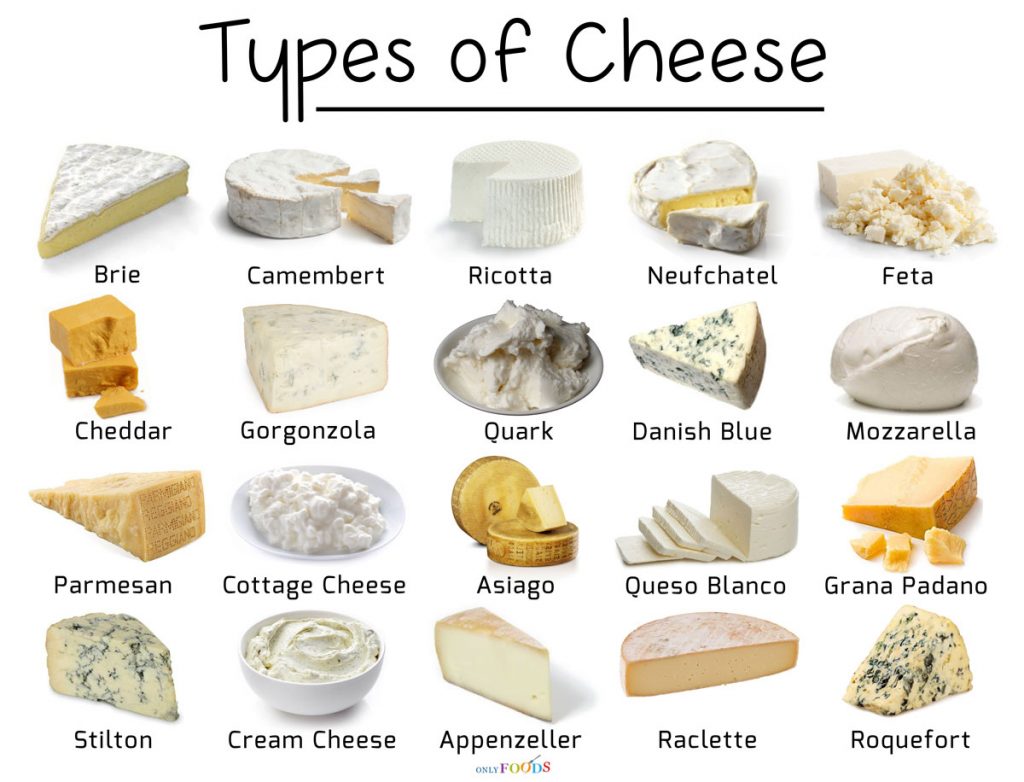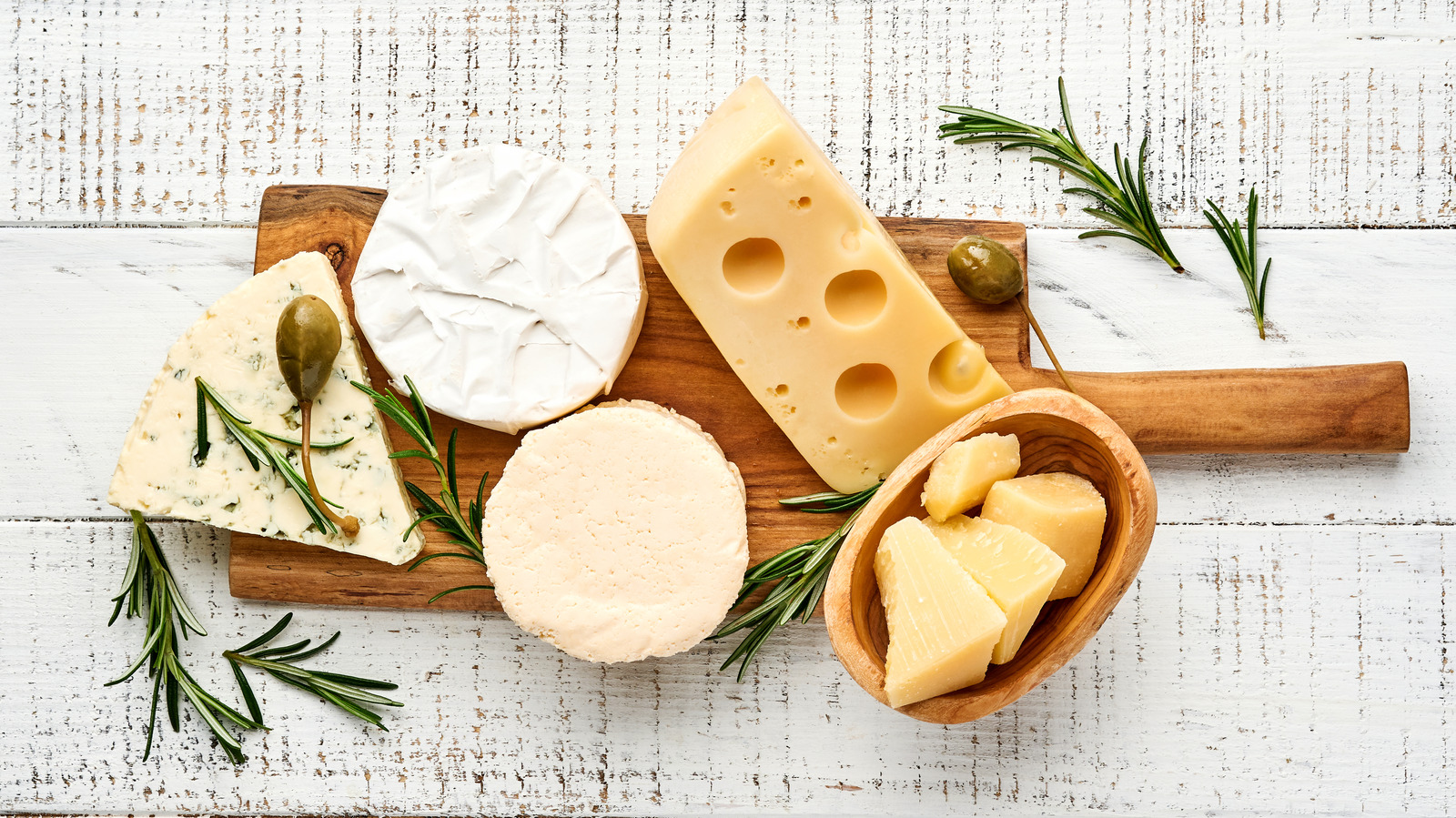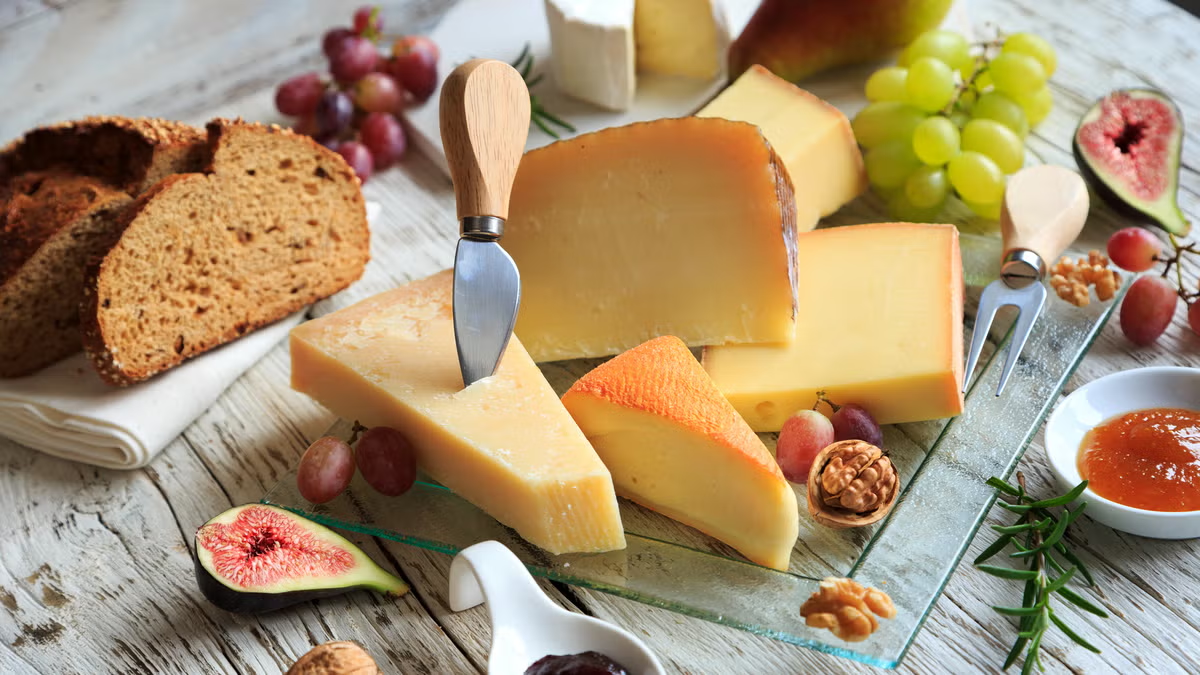Cheese is one of the world’s most beloved foods, with each variety bringing unique flavors, textures, and origins. From soft, creamy cheeses to hard, aged varieties, there’s a type of cheese for everyone. Let’s explore the different kinds of cheeses and what makes each one special.
What Are the Different Types of Cheese?
Cheese is created through the process of curdling milk, adding cultures, and sometimes aging the cheese to enhance flavor. There are hundreds of cheese varieties, each with its own flavor profile, texture, and uses. These different types are often classified by their texture, milk source, flavor intensity, and whether they’re aged.
Popular Types of Cheese You Need to Know
From mild to strong, soft to hard, some cheeses are household names, while others are more exotic. Here are a few popular types of cheese that are staples worldwide:
- Cheddar: A semi-hard cheese, known for its sharp taste and orange or white color, often aged for more complex flavors.
- Brie: This soft French cheese is creamy and mild, with a soft, edible rind.
- Mozzarella: Known for its stretchy quality, this cheese is a favorite for pizzas and comes from Italy, traditionally made from buffalo milk.
- Parmesan: Aged and hard, Parmesan adds a nutty, robust flavor, perfect for grating over pasta.
These cheeses offer a sampling of the incredible variety found in different regions.
Soft vs. Hard Cheeses: What’s the Difference?
Cheeses generally fall into two main texture categories: soft and hard. Texture plays a big role in how cheese feels in your mouth, how it melts, and how it can be used in cooking.

Why Some Cheeses Are Soft
Soft cheeses are typically high in moisture, which makes them creamier and easier to spread. They may be aged for only a few days or weeks, which preserves their soft texture. Examples of soft cheeses include Brie and Camembert.
Why Some Cheeses Are Hard
Hard cheeses have less moisture and are usually aged for a longer time, giving them a firmer, crumbly texture. Hard cheeses often have bolder flavors, as the aging process intensifies their taste. Parmesan and Pecorino are well-known hard cheeses.
Famous Soft and Hard Cheese Examples
- Soft Cheeses: Brie, Camembert, Ricotta
- Hard Cheeses: Parmesan, Pecorino, Manchego
Soft cheeses are often best enjoyed fresh, while hard cheeses can be stored longer and are perfect for grating or slicing.
Cheeses with Strong Flavors and Mild Flavors
Cheese flavors can range from mild and delicate to strong and intense. The strength of a cheese’s flavor depends on its aging process, milk type, and the bacteria or molds used in its creation.
- Strong-Flavored Cheeses: These cheeses, like Blue Cheese and Roquefort, have potent flavors due to molds and longer aging.
- Mild-Flavored Cheeses: These tend to be younger cheeses, like Mozzarella or Havarti, that have smooth, gentle flavors.
Understanding flavor strength can help you choose the right cheese for your meal, from light salads to hearty pasta dishes.
Where Different Cheeses Come From
Cheeses around the world are influenced by their region of origin, as local milk, climate, and traditions shape each variety. French cheeses like Brie and Camembert reflect French culinary heritage, while Italian cheeses such as Mozzarella and Parmesan showcase Italy’s love for bold, flavorful dishes. Each country has its unique cheese-making techniques and flavors, contributing to a global variety of cheese options.
Cheeses Made from Different Types of Milk
The type of milk used in cheese-making plays a significant role in its flavor and texture. While cow’s milk is the most common, goat and sheep milk cheeses offer unique tastes and are enjoyed worldwide.

Cow’s Milk Cheeses
Most cheeses, like Cheddar and Parmesan, are made from cow’s milk, providing a mild flavor base and a creamy consistency.
Goat Milk Cheeses
Goat milk cheeses, such as Chèvre, are tangy and often softer due to the milk’s unique composition. Goat cheese is popular in Mediterranean and Middle Eastern dishes for its earthy, rich flavor.
Sheep Milk Cheeses
Sheep milk cheeses, like Manchego and Pecorino, are often richer and have a slightly sweet taste. They’re commonly found in Spain, Greece, and Italy and are usually aged for robust flavors.
Each type of milk creates a different flavor profile, so experimenting with cheeses from various milk sources can be a delightful way to discover new tastes.
Why Some Cheeses Have Holes
Holes in cheese, like those in Swiss cheese, form during fermentation when bacteria produce gas, which gets trapped in the cheese and creates small air pockets. These “eyes” are typical in cheeses with high bacterial activity, making the texture lighter and airier. Cheeses with holes are a favorite for sandwiches and charcuterie boards, adding a unique look and feel to the dish.
Final Words
Cheese is an incredibly diverse food with options for every palate and preference. Whether you’re sampling a mild Brie or a sharp Cheddar, the world of cheese is full of flavors to explore. Enjoy trying different types of cheese and discovering your favorites, and remember, there’s always something new to learn and taste in the world of cheese!








































Leave a Reply